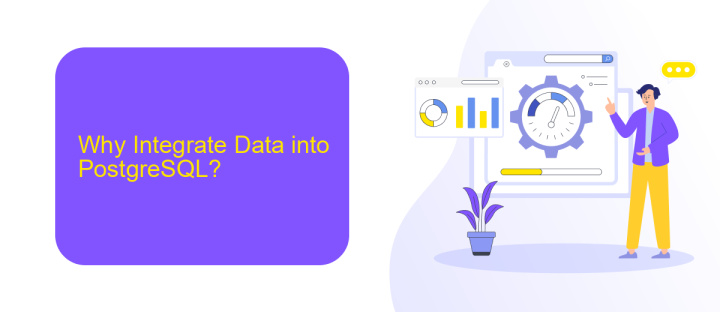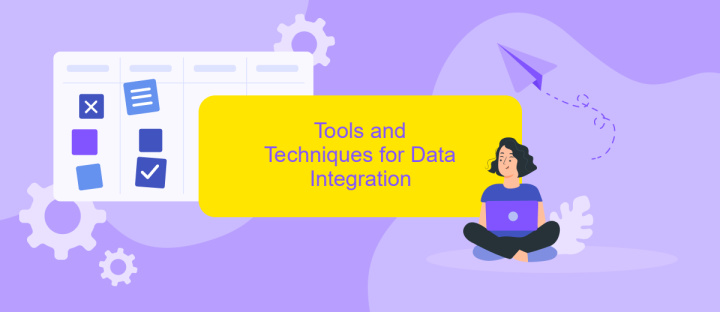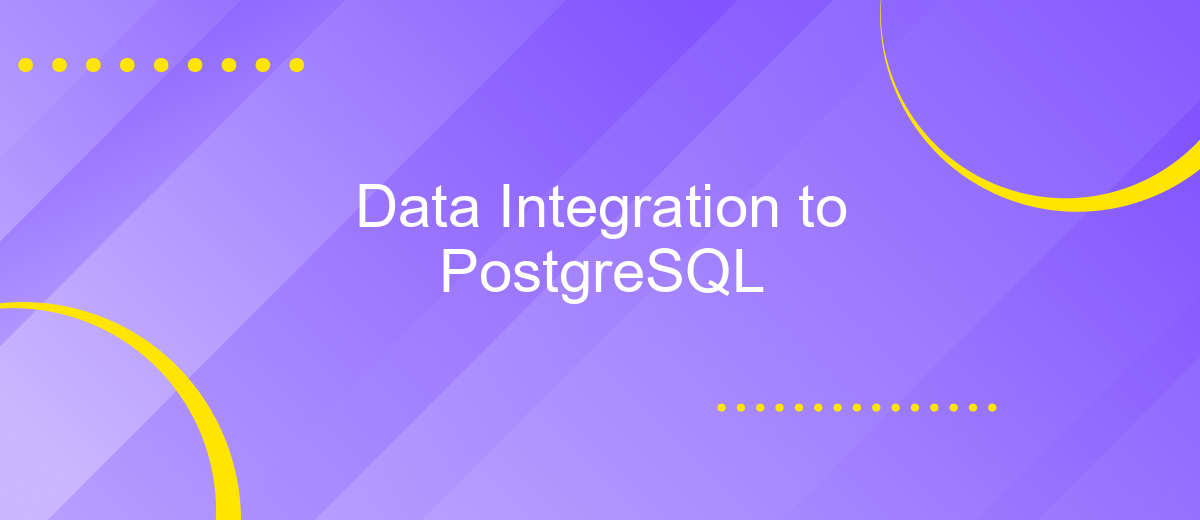Data Integration to PostgreSQL
Data integration into PostgreSQL is a crucial process for organizations aiming to consolidate disparate data sources into a unified database system. This article explores the methods and best practices for efficiently integrating data into PostgreSQL, ensuring data consistency, accuracy, and accessibility. Whether dealing with structured or unstructured data, understanding these techniques is essential for optimizing database performance and supporting informed decision-making.
Introduction to Data Integration
Data integration is a critical process in modern data management, enabling organizations to consolidate information from various sources into a unified system. This process enhances data accessibility, consistency, and reliability, facilitating better decision-making and operational efficiency.
- Combining data from multiple sources
- Ensuring data consistency and accuracy
- Improving data accessibility and usability
- Supporting better decision-making
Tools and services like ApiX-Drive play a pivotal role in streamlining data integration processes. ApiX-Drive offers a user-friendly platform that simplifies the integration of various data sources with PostgreSQL and other databases, ensuring seamless data flow and synchronization. By leveraging such services, organizations can significantly reduce the complexity and time required for data integration, allowing them to focus on deriving actionable insights from their consolidated data.
Why Integrate Data into PostgreSQL?

Integrating data into PostgreSQL offers numerous advantages for businesses and developers. PostgreSQL is renowned for its robustness, scalability, and support for complex queries. By centralizing data in PostgreSQL, organizations can streamline their data management processes, improve data consistency, and enhance data security. This centralized approach also facilitates advanced analytics and reporting, allowing for more informed decision-making and efficient operations.
Moreover, integrating data into PostgreSQL can be simplified using tools and services like ApiX-Drive. ApiX-Drive enables seamless data integration from various sources without the need for extensive coding or technical expertise. This service supports a wide range of data sources, making it easier to automate data workflows and ensure real-time data synchronization. By leveraging ApiX-Drive, businesses can save time, reduce errors, and focus on deriving actionable insights from their integrated data.
Tools and Techniques for Data Integration

Data integration with PostgreSQL can be streamlined using various tools and techniques that facilitate seamless data flow and transformation. These solutions help in ensuring data consistency, accuracy, and accessibility across different systems and platforms.
- ETL Tools: Extract, Transform, Load (ETL) tools like Apache NiFi, Talend, and Informatica help in extracting data from various sources, transforming it into a suitable format, and loading it into PostgreSQL.
- API Integration Platforms: Services like ApiX-Drive offer user-friendly interfaces to connect different applications and automate data transfer to PostgreSQL without needing extensive coding knowledge.
- Data Replication Tools: Tools such as SymmetricDS and Bucardo support real-time data replication between PostgreSQL and other databases, ensuring data is synchronized and up-to-date.
- Data Pipelines: Platforms like Apache Kafka and StreamSets provide robust data pipeline solutions to handle streaming data integration with PostgreSQL.
Using these tools and techniques, businesses can efficiently manage their data integration processes with PostgreSQL, ensuring that data is consistently available for analysis and decision-making. Services like ApiX-Drive further simplify the integration process by offering automated workflows and reducing the need for manual intervention.
Best Practices and Considerations

Effective data integration with PostgreSQL requires careful planning and consideration of several best practices. Ensuring data consistency, security, and performance are paramount to a successful integration process. One of the first steps is to thoroughly understand the data sources and their respective schemas to design a robust integration strategy.
Using reliable tools and services can streamline the integration process. For instance, ApiX-Drive offers a versatile platform for automating data transfers between various applications and PostgreSQL. This can significantly reduce manual effort and minimize the risk of errors.
- Ensure data consistency by implementing proper ETL (Extract, Transform, Load) processes.
- Regularly monitor and optimize performance to handle large volumes of data efficiently.
- Secure data transmission using encryption and other security measures.
- Utilize reliable integration tools like ApiX-Drive for seamless data synchronization.
By following these best practices and leveraging tools like ApiX-Drive, organizations can achieve a more efficient and reliable data integration process with PostgreSQL. This not only enhances data accessibility but also supports better decision-making and operational efficiency.
- Automate the work of an online store or landing
- Empower through integration
- Don't spend money on programmers and integrators
- Save time by automating routine tasks
Case Studies and Success Stories
One notable case study involves a leading e-commerce company that successfully integrated its various data sources into PostgreSQL using ApiX-Drive. The company faced challenges in unifying data from multiple platforms, including sales, customer service, and inventory management systems. By leveraging ApiX-Drive, they were able to automate data transfer processes, ensuring real-time synchronization and significantly reducing manual data entry errors. This integration enabled them to generate comprehensive reports and gain valuable insights, leading to improved decision-making and operational efficiency.
Another success story comes from a healthcare provider that needed to integrate patient data from different electronic health record (EHR) systems into a centralized PostgreSQL database. Using ApiX-Drive, the healthcare provider was able to seamlessly connect disparate data sources, ensuring accurate and up-to-date patient information across all departments. This integration not only enhanced patient care by providing a holistic view of patient history but also streamlined administrative tasks, allowing healthcare professionals to focus more on patient outcomes rather than data management.
FAQ
What is Data Integration in PostgreSQL?
How can I automate data integration tasks in PostgreSQL?
What are the common challenges in integrating data into PostgreSQL?
Can I integrate real-time data into PostgreSQL?
What are the security considerations for data integration in PostgreSQL?
Time is the most valuable resource in today's business realities. By eliminating the routine from work processes, you will get more opportunities to implement the most daring plans and ideas. Choose – you can continue to waste time, money and nerves on inefficient solutions, or you can use ApiX-Drive, automating work processes and achieving results with minimal investment of money, effort and human resources.


